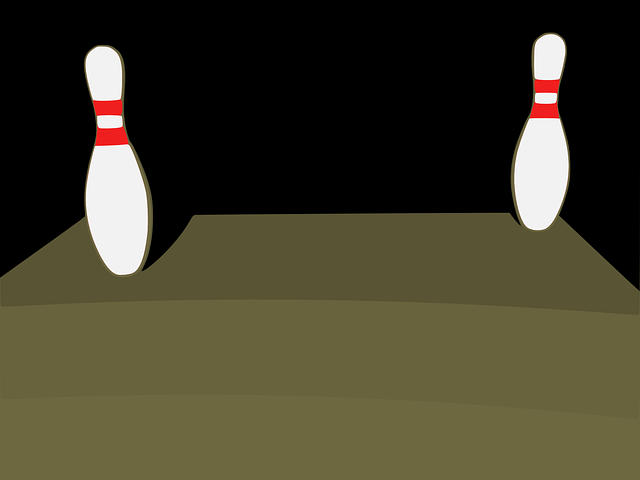
Anytime you’re stepping up to the approach, your main goal is to bowl a strike.
Of course, this can’t happen 100 percent of the time, even for professionals, so you need to make sure you work on picking up your spares.
Sometimes, though, you run into the most difficult of circumstances that make this extremely difficult: the split. This article will go over different splits in detail and help you understand how to convert them better.
What Is a Split in Bowling, and What Them?
A split is a particular type of spare where two or more pins remain, and there is a gap of at least one pin in between them.
As follows from this rather broad definition, splits can vary significantly. Some with only two pins and not too much width in between them (like the 2-7, for example) are far more difficult than others like the dreaded 7-10 split.
The causes of a split naturally vary depending on which pin configuration you are leaving, but the common thread is that you haven’t hit the pocket correctly for maximum pin carry. Specifically, it has to do with the angle of entry your bowling ball takes into the pocket, and how high you are contacting the head pin and/or the pin carry that follows.
If you don’t have enough hook as the ball hits the pocket, or if you hit the pocket shallow, a split can be the unfortunate result. Ditto if you throw a straighter ball that hits the head pin directly.
These different circumstances result in different splits, so let’s look at some specific combinations of pins to learn more.
Difficult, Common, and Rare Splits and Tips to Pick Them Up
When you’re looking to “pick up” or convert your splits, there are several general techniques you can employ as well as some that are specific to a particular split.
In general, you need to first be a good spare shooter in order to be adept at picking up splits. This is because the adjustments you need to make for spares (your starting position, target arrow, avoiding drift, etc.) also are crucial for hitting your splits. (And even more so because you need to hit the pin even more precisely in order for it to knock down the other pin(s) in the split.
Let’s next look at a few common and rare splits in more detail.
The 4-5 (5-6) split
This is a fairly common split, as right-handed bowlers tend to leave the 4-5 pins and lefties the 5-6. To pick it up, try moving about 8-10 boards right (for the 4-5) and left (for the 5-6) and keep your same strike target line. The oil on the lane, of course, can affect how many boards you need to move, so be sure to experiment and adjust based on your lane conditions
The 3-10 Split (Baby Split)
Another common split, the baby split is when you leave the 3 and the 10 pins. This requires a slightly different strategy as you need to contact the 3 on the right edge so it both topples that pin and shoots your ball over to the 10 and knocks that down too. A deft touch is necessary for the 3-10, which illustrates that ball speed is also important for picking up splits.
Next let’s look at a couple of much rarer splits.
The 4-6-7-10 Split (Big Four, Big Ears)
The 4-6-7-10 split is known as the “Big Four” or “Big Ears,” and your likelihood of picking this one up is only about 1%, even though you may think that it’s easier to convert since there are more pins to work with. For this split, you need as much ball speed as you can muster because you need to aim at one side and shoot the pins back to the other side (or get lucky by having them bounce out of the pit).
The 4-6-7-9-10 Split (Greek Church)
Even more difficult is the 4-6-7-9-10 split, which is also called the “Greek church.” The success rate on this one is a staggeringly low 0.2%. This is another split where you need pins to rocket off to hit others, and your best bet is to get the 6 to knock down the 9, which hits the 10 across the lane to knock down the 7 and 4. But, as the numbers suggest, don’t hold your breath on this one happening!
We also think one more split in this category is worth a mention, the 5-7-10 split. This is as close as we have to an “impossible” bowling split, as even leaving it is considered extremely rare, let alone picking it up. It happens so little that there aren’t even statistics on how frequently it is converted.
How to Pick Up the 7/10 Split?
The final split we’ll cover is one the most commonly known and referred to: the 7-10 split. Despite what you may assume, and guess based on the distance between the pins, this is not the most difficult to convert.
Both the Big Four and Greek Church we discussed previously are harder to pick up. But the 7-10 holds more allure among many bowlers and you also will likely encounter it more frequently on the lanes.
As with the other long-shots, it requires proper technique but also a good deal of luck. To convert a 7-10 split, start on the opposite side of the lane as your bowling hand. Righties will aim at the 7 while lefties will go for the 10, and make sure to target the inside edge of that pin, since you need the pin to somehow slide all the way over to the opposite corner. To do this, try to muster up all the power you have, as you need that pin to either bounce out of the pit or slide all the way over. In either case, you need a good deal of luck to convert the 7-10.
Do I Need a Spare Ball to Convert Splits
If you’re a serious bowler, it’s a good idea to consider using a dedicated spare ball, which of course also becomes your ball for picking up splits.
For lots of splits, including the 7-10, you should have a lighter ball. This helps you be more accurate as well as reduces ball spin. A plastic or polyester coverstock (rather than urethane or reactive resin) also helps in this regard. All in all, you can get away with just using one ball, but a dedicated spare ball for throwing your split shots can definitely be beneficial.
We hope this article has helped you learn more about splits and how to convert them better. Best of luck on the lanes!


Leave a Reply